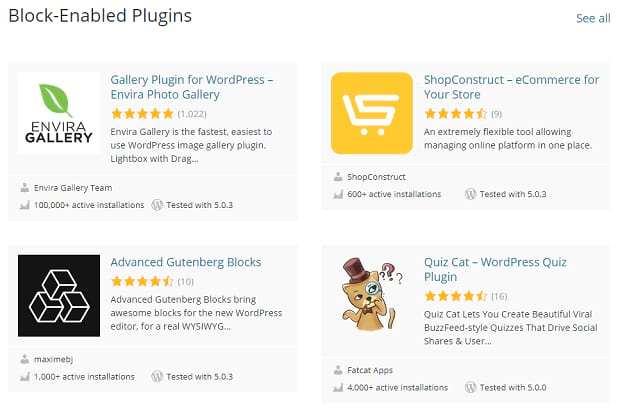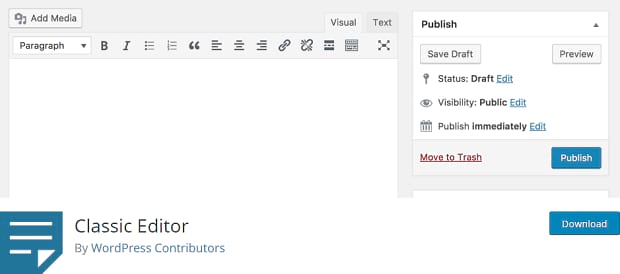
Should You Switch to Gutenberg?
Are you wondering whether or not you should switch to the Gutenberg update? WordPress 5.0’s release has caused a bit of a stir in the WordPress community, as many long-time fans aren’t fond of the new Gutenberg editor.
While you will definitely need to update WordPress eventually, there are ways to roll back to the Classic editor. But should you do it? Here are a few reasons you might want to use (or not use) Gutenberg.
- Website Stability and Compatibility
- Ease of Use
- Functionality
- How to Use the Classic Editor
Website Stability and Compatibility
Gutenberg has been in development for a while now, but the fact is, it’s a newer piece of software. For the time being, the Classic editor is almost certainly more stable, as it’s had years for bugs to be fixed and issues to be ironed out. It’s far from a perfect editor, but it’s simply had more time put into it.

If you’re running an important website and stability is important to you, you should definitely test out Gutenberg in a safe environment before you install it, or consider postponing using it until later versions of WordPress.
As for compatibility, there are still some plugins and themes that aren’t Gutenberg compatible, especially older ones that are no longer actively maintained. Many developers are creating Gutenberg-compatible themes and plugins, which seamlessly incorporate into the interface. But you should definitely test out Gutenberg first if you’re not sure that your theme or plugins will work.

Ease of Use
Whether Gutenberg or Classic is easier to use is definitely a question of opinion. But there’s no denying that Gutenberg has a learning curve. While most people will be familiar with the Classic editor’s type of interface, the less tech-savvy may have trouble even figuring out how to type into Gutenberg.

Gutenberg works without any HTML or code whatsoever, which can make life easier for many people, especially if they’re using plugins with custom Gutenberg blocks. However, the sheer amount of buttons and blocks can be overwhelming for new users.
With the Classic editor, all you have to do is type and from there you can learn how to use the functionality you need as you go. With Gutenberg, you need to learn a lot at once, but things will probably be easier on you later.
Functionality
Gutenberg certainly has a lot of features, most notably the block feature that makes it easy to create a website from scratch. Beyond that, there are blocks with new functionality, like buttons and audio. Before, adding in these things could require plugins or HTML coding.
If you don’t need a website builder or all these new features, however, much of Gutenberg may be lost on you. If you’re just creating a simple website, it might be easier to stick with the Classic plugin rather than deal with Gutenberg’s interface.
There’s also the fact that the Classic editor plugin will only be supported until 2021. Gutenberg will continue receiving content and stability upgrades all the while. So if you want to get the most out of WordPress’ functionality, you’ll need to make the switch to Gutenberg. In a few years, if the Classic editor is buggy or breaks, you won’t be getting support.
How to Use the Classic Editor
Whether you want to use Gutenberg or not, it’s definitely a bad idea to avoid updating WordPress. You should always keep WordPress up to date — otherwise, you’re opening yourself up to security issues, bugs, and a whole host of other problems.
If you don’t like Gutenberg, there are other, safer ways to revert to the Classic editor. All you need to do is install the Classic Editor plugin. Or if you just like the Classic interface, you can still use a Classic block within Gutenberg too.

Making the Switch
In the end, the best thing to do is to try out Gutenberg yourself in a safe testing environment. If you like it and you don’t notice any bugs, then you may want to make the switch once and for all. Hopefully, this guide provided some direction for your decision. Now all that’s left is to give Gutenberg a test drive for yourself.
If this article was helpful, please give us a follow on Facebook and Twitter to see more!










